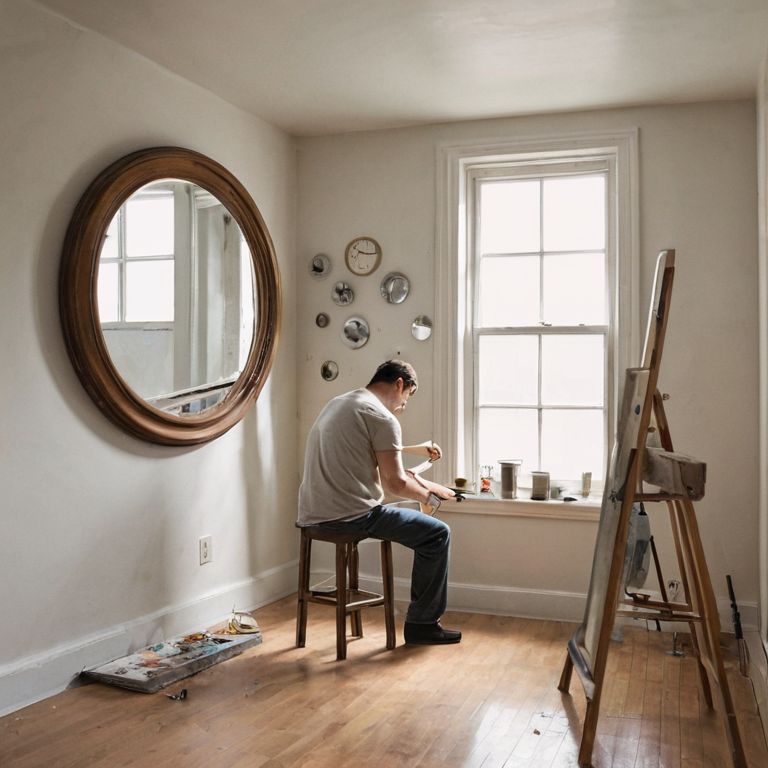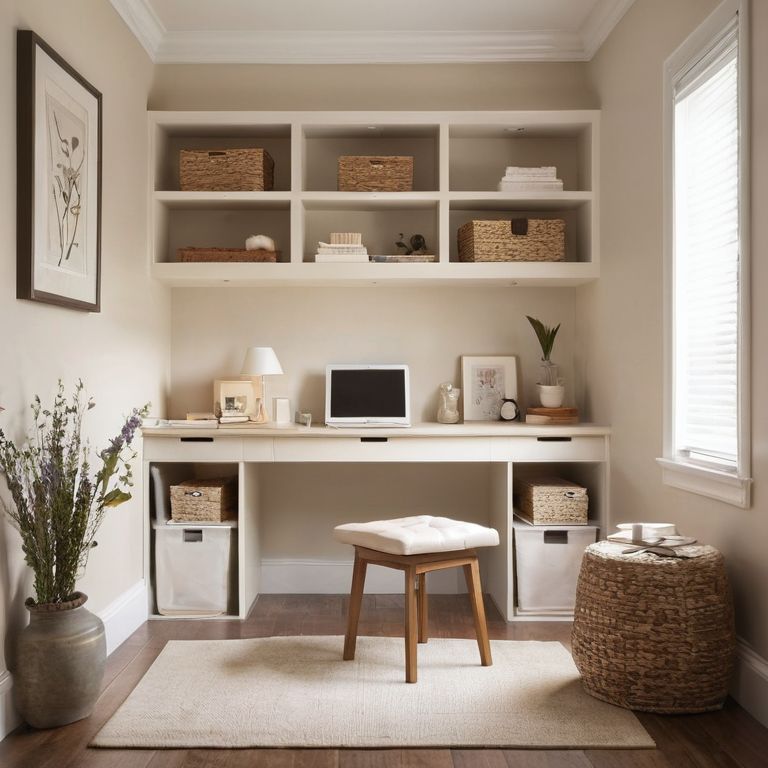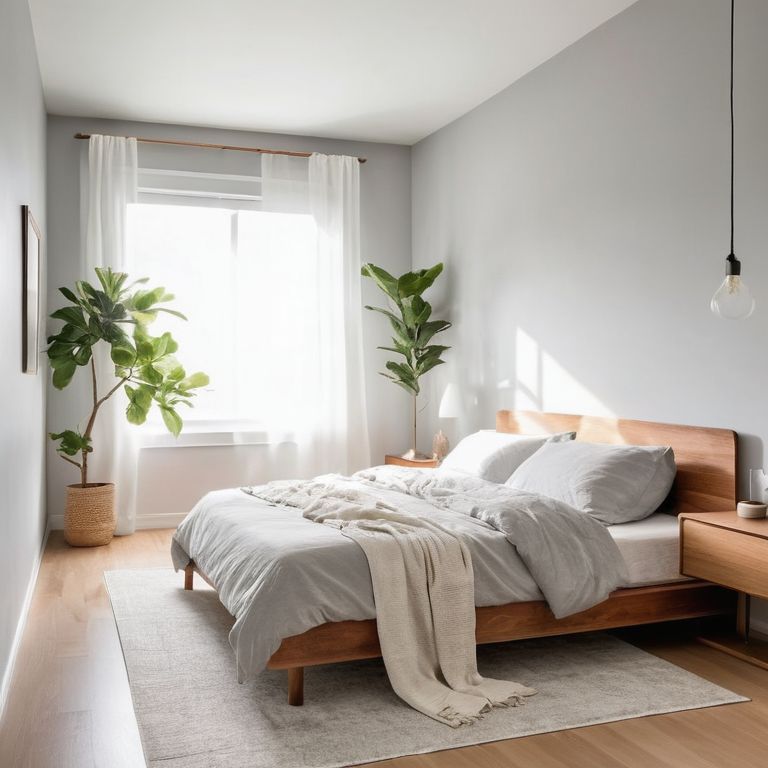I still remember the first time I walked into a tiny apartment that felt like a spacious oasis – it was a revelation. The owner had mastered the art of how to make a small room look bigger, and it wasn’t just about minimalism or fancy decor. As someone who’s worked with numerous clients struggling to create a sense of space in their homes, I’ve come to realize that there’s a common myth surrounding this topic: that you need to get rid of everything to make a room feel larger. But the truth is, it’s not about what you have, it’s about how you use it.
In this article, I’ll share my practical, no-nonsense advice on how to make a small room look bigger. You’ll learn how to create a sense of flow, use lighting to your advantage, and select furniture that creates the illusion of space. My approach is centered around the idea that every object should have a purpose or a place, and by applying this principle, you can transform even the coziest of rooms into a serene sanctuary. By the end of this guide, you’ll be equipped with the knowledge to turn your small room into a haven that calms your mind and inspires your creativity.
Table of Contents
Guide Overview: What You'll Need

Total Time: 2 hours 30 minutes
Estimated Cost: $50 – $100
Difficulty Level: Intermediate
Tools Required
- Paintbrush (various sizes)
- Roller Extension Pole (for painting ceilings)
- Tape Measure (for measuring rooms and furniture)
- Level (to ensure shelves and pictures are straight)
- Pencil (for marking walls and furniture)
- Utility Knife (with extra blades)
Supplies & Materials
- Light-colored Paint (for walls and ceilings)
- Mirrors (to create illusion of larger space)
- Sheer Curtains (to allow natural light and make windows appear larger)
- Minimal Patterned Rugs (to create sense of openness)
- Shelving Units (to keep clutter off floors and make room appear more spacious)
- Plants (to add decoration without cluttering the space)
Step-by-Step Instructions
- 1. To start, let’s reimagine the space by removing any clutter or unnecessary items that can make the room feel cramped. This means taking everything out of the room, and then only putting back what is truly needed or brings a sense of calm and serenity. I like to call this process “interviewing” your belongings, where you ask yourself if each item has a purpose or a place in your life.
- 2. Next, consider the color palette of your room. Lighter colors can make a room feel more spacious, while darker colors can make it feel cozier but smaller. I recommend using a monochromatic color scheme to create a sense of continuity and flow. This can include painting the walls, ceiling, and trim all the same color to create a sense of visual harmony.
- 3. Now, let’s think about the furniture in the room. Bulky or oversized furniture can make a small room feel even smaller. Instead, opt for multi-functional pieces that serve more than one purpose, such as a storage ottoman or a desk with built-in shelving. This will help reduce clutter and create a sense of efficiency in the room.
- 4. The placement of furniture is also crucial in creating the illusion of a larger space. Try to create a sense of flow by leaving space between pieces of furniture and avoiding blocking any doorways or windows. This will help create a sense of openness and make the room feel more airy.
- 5. Lighting can also play a significant role in making a small room feel larger. Natural light is always the best option, so try to maximize the amount of natural light entering the room by keeping windows unobstructed and using sheer curtains or blinds. If natural light is not possible, consider using layered lighting to create a sense of depth and visual interest.
- 6. Another often-overlooked aspect of small room design is the use of vertical space. By using wall-mounted shelves, storage units, or even floor-to-ceiling curtains, you can create a sense of height and draw the eye upwards, making the room feel more spacious.
- 7. Finally, consider the textural elements in the room, such as rugs, throw pillows, and blankets. Using a variety of textures can add depth and visual interest to the room, but be careful not to overdo it, as too many textures can create a sense of visual clutter. Instead, opt for a few statement pieces that add a touch of warmth and personality to the space.
Beyond the Walls

As we explore the concept of creating the illusion of space, it’s essential to consider the role of small room decorating ideas in enhancing the ambiance of a room. By selecting furniture pieces that serve multiple purposes, such as a storage ottoman or a desk with built-in shelving, we can maintain a sense of clutter-free elegance. This approach not only saves physical space but also contributes to a clearer mental state, allowing us to focus on what truly matters.
In addition to thoughtful furniture choices, wall color tricks for small spaces can significantly impact the perceived size of a room. Lighter hues, such as soft grays or creamy whites, can create a sense of airiness, making the space feel more expansive. Furthermore, the strategic use of rugs can help define different areas within the room, creating a sense of separation and visual balance.
By incorporating these strategies, we can transform even the smallest of rooms into a serene oasis. Maximizing natural light in small rooms is also crucial, as it can make the space feel more welcoming and open. By embracing minimalist decor for tiny rooms, we can create an environment that not only looks larger but also feels more peaceful and inviting, allowing us to unwind and recharge in our own little sanctuary.
Space Saving Furniture Designs
As I delve into the world of space-saving furniture designs, I’m reminded of my own passion for carpentry. There’s something therapeutic about crafting a piece that serves multiple purposes, like a storage ottoman or a desk with built-in shelving. These clever designs not only free up physical space but also help to declutter our minds. By choosing furniture that does double duty, we can create a sense of flow and harmony in even the smallest of rooms.
I’ve seen firsthand how a well-designed piece of furniture can transform a room. For instance, a wall-mounted foldable table can provide a dedicated workspace without occupying precious floor space. Similarly, a storage bed frame can keep linens and out-of-season clothes tucked away, reducing visual clutter and promoting a sense of calm. By embracing space-saving furniture designs, we can create a sanctuary that feels larger than its physical dimensions.
Wall Color Tricks for Small Spaces
When it comes to creating the illusion of space, the color of your walls plays a significant role. I’ve found that lighter shades can make a room feel more airy and expansive. Soft whites, creams, and pale grays are excellent choices as they reflect light and create a sense of continuity. By using a single, light color on all walls, you can visually expand the space and make it feel more serene.
In my own home, I’ve applied this principle with great success. A gentle, sky-blue hue on the walls of my smallest room creates a sense of calmness and openness, making the space feel larger than it actually is. Remember, the key is to keep it simple and unobtrusive, allowing the eye to move freely around the room without interruption.
5 Serene Strategies to Create the Illusion of Space

- Opt for Multifunctional Furniture: Choose pieces that serve more than one purpose, like a storage ottoman or a desk with built-in shelving, to reduce clutter and visual noise
- Mind the Mirror: Strategically place mirrors to reflect natural light and create the illusion of a larger space, but avoid overdoing it to prevent a cluttered feel
- Select Light and Airy Colors: Paint walls with light, soothing colors that reflect light and make the room feel more spacious, and consider the 60-30-10 rule for a balanced color palette
- Rethink Your Window Treatments: Use sheer curtains or blinds that allow natural light to filter in and make the room feel more open, and avoid heavy or bulky treatments that can make windows appear smaller
- Embrace the Power of Negative Space: Don’t be afraid to leave some areas of the room uncluttered and empty, as this can create a sense of breathability and make the space feel more expansive
Key Takeaways for a More Spacious Sanctuary
I’ve learned that by applying a few simple principles, such as carefully selecting space-saving furniture and using wall colors that create a sense of depth, even the smallest rooms can feel more expansive and peaceful
Beyond the physical tweaks, it’s essential to remember that our perception of space is deeply psychological – by letting go of clutter and embracing minimalism, we can create an environment that feels more serene and open
Ultimately, the goal of creating a sense of space in small rooms is not just about aesthetics, but about crafting a haven that nurtures both body and mind – a place where we can retreat from the world and find calm, no matter how tiny the footprint may be
A Sanctuary in Any Space
The true secret to making a small room look bigger isn’t about the room itself, but about creating a sense of flow and harmony that invites the mind to expand beyond its walls.
Nathan Reed
Creating Your Sanctuary: A Conclusion
As we’ve explored the ways to make a small room look bigger, it’s clear that the journey is just as important as the destination. We’ve discussed the value of space saving furniture designs, clever use of wall colors, and the psychological impact of clutter on our perception of space. By applying these principles, you can create a room that not only appears larger but also feels more serene and inviting. Remember, the goal is to build a space that reflects your mind and provides a true sanctuary from the outside world.
As you embark on this transformation, keep in mind that it’s a process of discovery and growth. Don’t be afraid to interview your belongings and let go of items that no longer serve a purpose or bring you joy. By doing so, you’ll not only create a more spacious environment but also cultivate a sense of clarity and inner peace. Your home, no matter its size, can be a haven that inspires and rejuvenates you, and it all starts with the simple act of creating space for what truly matters.
Frequently Asked Questions
What are some creative ways to use mirrors to create the illusion of a larger space?
I’m a big fan of using mirrors to create the illusion of more space. Strategically placing a mirror opposite a window can reflect natural light, making the room feel brighter and more spacious. You can also use a large mirror to create the illusion of a longer wall or place a mirror at the end of a narrow hallway to make it feel more expansive.
How can I choose the right lighting to make a small room feel more spacious?
To create a sense of space, I recommend using lighting that’s both calm and airy. Table lamps or floor lamps with slender profiles can help, while avoiding harsh overhead lighting that can make a room feel claustrophobic. Soft, warm tones can also make a space feel more serene and expansive.
Are there any specific furniture arrangement strategies that can help make a small room appear bigger?
To create the illusion of more space, I recommend using the “breathing room” technique: leave about 3-5 inches between furniture pieces and walls. This simple trick can make a room feel more expansive. Additionally, consider floating furniture, like a desk or sofa, away from walls to create a sense of flow.
